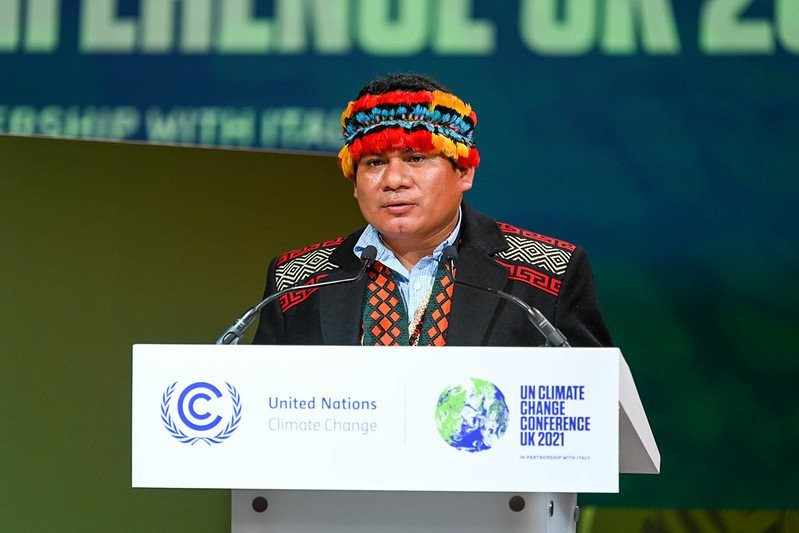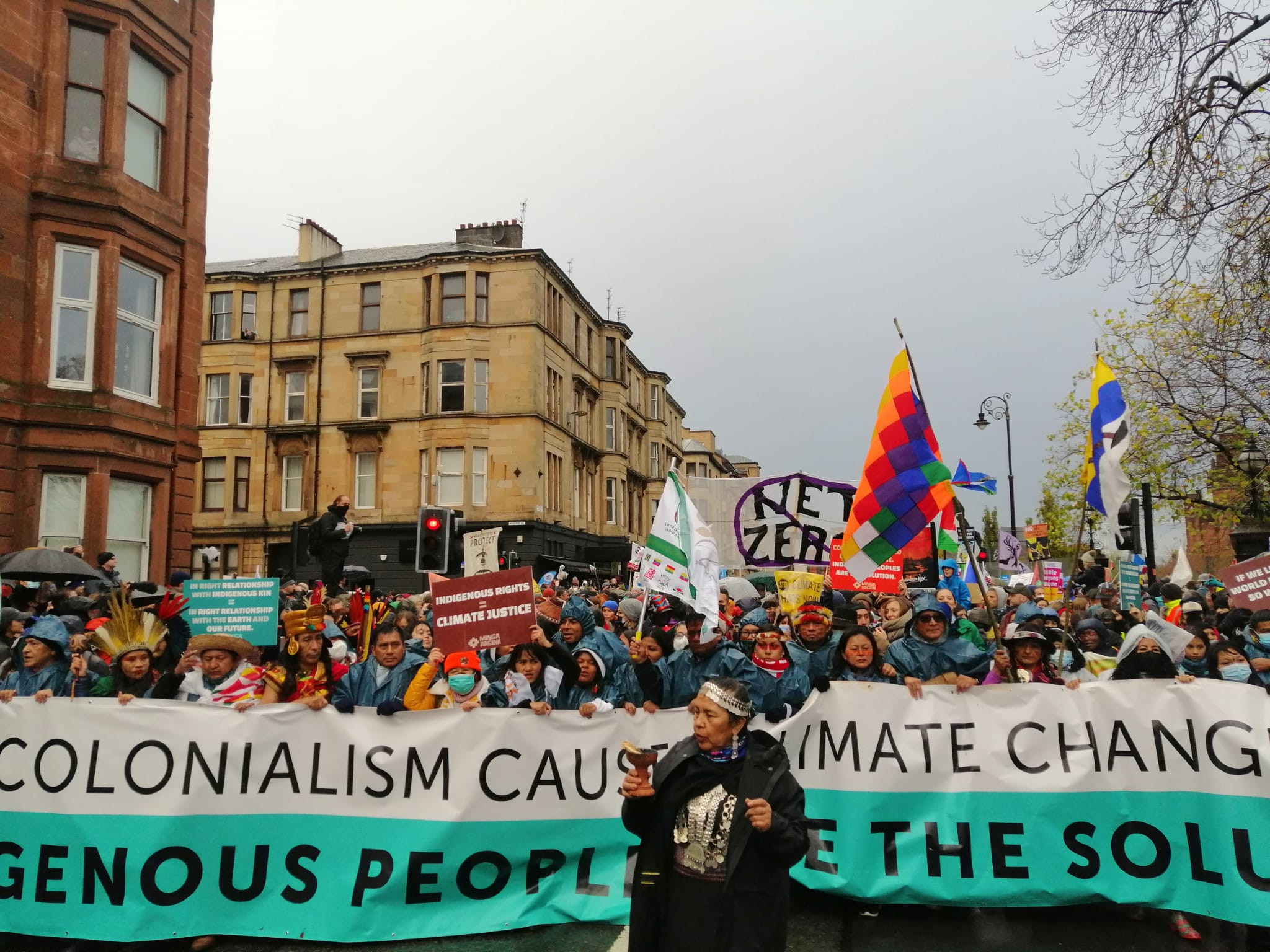Indigenous Peoples at the Heart of Climate and Biodiversity Action Offer Hope

Indigenous peoples and local communities have protected their home beneath the canopies for centuries — preventing fires, miners and loggers from destroying one of the world’s most important climate solutions: forests. Today, Indigenous and local leaders continue to fight for recognition of their territorial rights locally — and for their voices to be heard globally for climate and biodiversity action. Florence and Eugenia have felt honored to support their efforts over the past few years and — in this short amount of time — witnessed significant transformations. On Sunday, the International Day for Biological Diversity, they will look back at the progress made and share what they hope to see for Indigenous peoples this year.
In 2017, a bus sporting a deep green image of a rainforest on its side sped across European highways. Inside were Indigenous peoples from forest communities in Mesoamerica, Brazil, the Amazon basin and Indonesia who had traveled to Europe for an unprecedented campaign.
These “guardians of the forest” embarked on a tour of European cities to meet with politicians, journalists and civil society organizations ahead of the UN Conference of the Parties (COP) 23 in Bonn, Germany. Their goal was to advocate for themselves, their communities and their rights as a critical yet overlooked part of the solution to mitigate climate change.
The campaigners felt that this far-from-conventional strategy was needed to make their voices heard by climate negotiators — especially given that Indigenous rights had been excluded from the final version of the Paris Agreement, a major international climate treaty, just two years earlier.
On this month-long journey, they marched on the streets of London, made impassioned calls to action within the walls of the European Parliament in Brussels and shared words of encouragement with young students around forest campfires outside of Amsterdam.
Though the bus made its final stop at the bright, flashy pavilions of COP23, it was the work done outside of the summit that started to turn the world’s attention toward Indigenous peoples and their rights. They had come a long way, but still hoped to get their due platform within a United Nations (UN) Climate Summit.
2021, an unprecedented year

"We come with concrete proposals in hand, to tell you: let's work together.”
Four years after the bus tour, Tuntiak Katan, a member of Ecuador’s Shuar people, stood before presidents, prime ministers and global business leaders at the COP26 World Leaders’ Summit in Glasgow. It was the first time he and other representatives of the Global Alliance of Territorial Communities (GATC) were invited to address heads of state at a high-profile UN event.
“The decisions we make today will make the difference in whether we all live or we all perish," he continued.
Tuntiak’s colleagues Patrick Saidi Hemedi and Joan Carling took center stage as well. Together, the three leaders affirmed that Indigenous peoples across the globe are working to keep forests standing — and governments must recognize and support their contributions. Not just on paper and in speeches, but through funding and concrete actions to protect their land rights.
While much remains to be done, five governments and 17 private donors took a historic first step at this global gathering. They pledged to deliver $1.7 billion directly to Indigenous and local communities to support their forest-protection efforts — an unprecedented sum, considering they’ve historically received less than 1% of all climate funding.
For years, Indigenous groups have advocated outside of COP walls — holding press briefings at picnic tables, leading demonstrations, telling stories of their communities and demanding to be heard. Their activism led them from the periphery of global climate events to the very nucleus where negotiations take place.
And not just in Glasgow. A few months prior, Indigenous representatives from nine Amazonian countries attended the International Union for Conservation of Nature (IUCN) World Conservation Congress as voting members for the first time. They introduced a motion to protect 80% of the Amazon by 2025, which the congress passed overwhelmingly.
2021 was truly an unprecedented year. But only time will tell if world leaders will keep the promises they made.

The road ahead
What Eugenia and Florence have collectively witnessed over the past five years is the result of a long journey of advocacy that has spanned generations. And for Indigenous peoples, it is nowhere near its end.
Despite their historic presence in climate negotiations last year, Indigenous leaders continue to march alongside allies whose voices are still excluded from global talks — and demand bolder moves for climate justice and biodiversity action that respects their rights.
Bringing Indigenous issues to the forefront could not be more critical in the lead up to the UN Biodiversity Conference, which is set to finally convene world leaders after two years of coronavirus-related delays, where policymakers will decide on a new set of goals for nature. Indigenous peoples, whose lands contain the majority of the world’s remaining biodiversity, are some of the best stewards of the critical ecosystems that must be protected to mitigate climate change and stem biodiversity loss. Securing their rights and following their guidance will be a powerful bottom-up opportunity at the summit to address the crises our planet faces.